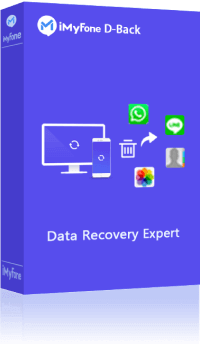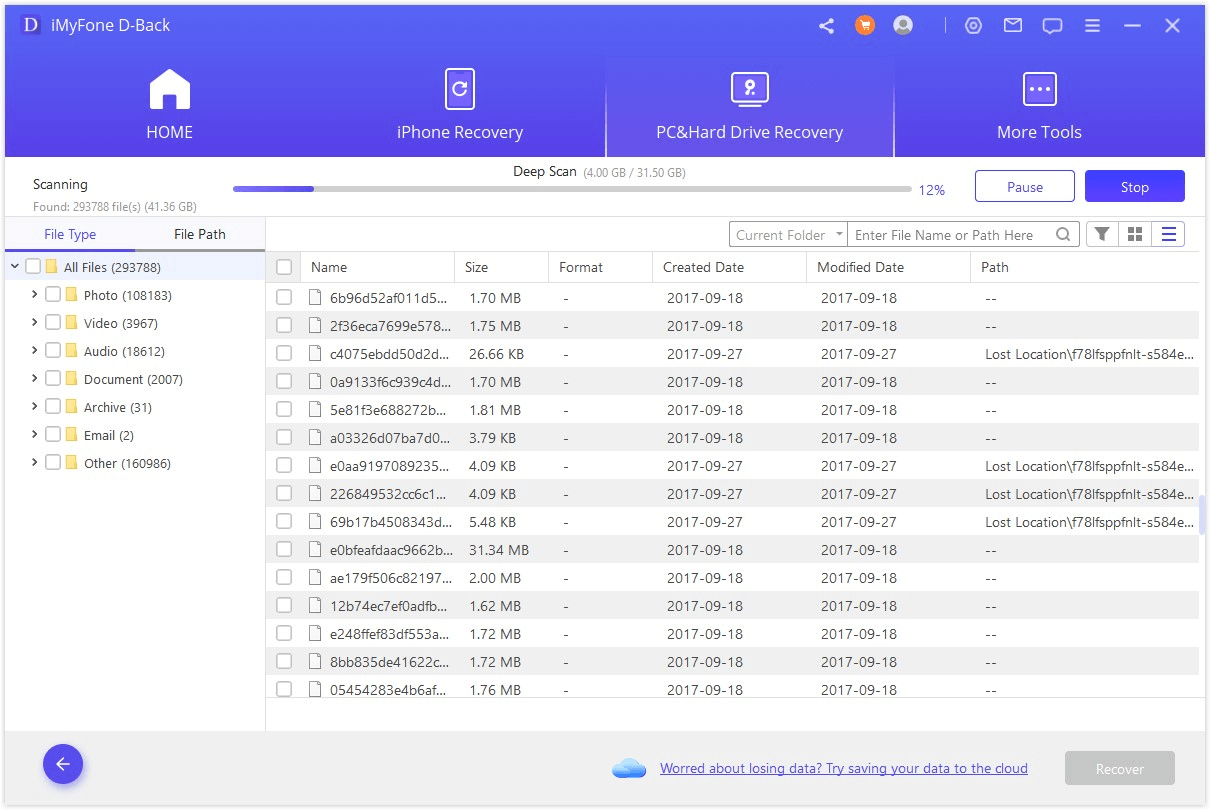Tings You Need To Know About Fixing A Dead SSD
Category: PC Data Recovery

5 mins read
We've all experienced that sinking feeling when our computer suddenly crashes or an SSD dies, taking our precious data with it. But don't lose hope just yet! With the right methods and techniques, you can recover data from a dead SSD and revive a dead SSD.
In this article, we'll guide you through every step of the process, so you can breathe new life into your dead SSD and recover your lost data.
Video Guide | How to Fix not showing/working/dead SSD
In this article:
What is an SSD?
Before diving into the world of data recovery, it's essential to understand what an SSD is and how it differs from traditional hard disk drives (HDDs). SSD stands for Solid State Drive, and it's a type of storage device that uses NAND-based flash memory to store data. This makes them faster, more reliable, and more energy-efficient than HDDs, which use spinning disks to read and write data.
Why do SSDs fail?
SSDs, like any other storage device, can fail for various reasons. Some of the most common reasons include:
- Firmware issues: The firmware, which is the software that controls the SSD, may become corrupt or outdated.
- Physical damage: Dropping or bumping the SSD can cause physical damage to the components.
- Power surges: Sudden voltage fluctuations can damage the SSD's sensitive electronics.
- Overheating: Excessive heat can cause the SSD to malfunction or reduce its lifespan.
- Wear and tear: SSDs have a limited number of read/write cycles, and over time, their performance may degrade.
Signs of a failing SSD
To recover data from an SSD, it's crucial to recognize the warning signs of a failing SSD. Here are some common indicators:
- Slow performance or frequent freezing
- Frequent file corruption or inability to save files
- Unusual noises or clicking sounds
- Frequent error messages or blue screen of death (BSOD)
- Disappearing files or folders
How to Recover Data from a Dead SSD: Methods to Retrieve Your Lost Data
Data loss can happen to anyone, and when it does, it can be devastating. If your SSD has failed, and you need to recover data from a dead SSD, there are several methods to try.
1 Method 1: Recover Data from a Dead SSD Using iMyFone D-Back
One of the most effective and safe methods is to use professional hard drive data recovery experts.
iMyFone D-Back is powerful data recovery software, designed to help you recover lost data from various storage devices, including SSDs, USB drives, External Disks, CF/SD Cards, and more.
With its user-friendly interface and advanced recovery algorithms, iMyFone D-Back can quickly scan your SSD and retrieve lost files, even if the drive isn't recognized by your computer.

- Supports 1000+ file types, including documents, photos, videos, audio files, and more.
- Recover deleted files from 20+ devices, such as smartphones, tablets, computers, USB drives, and SD cards.
- iMyFone D-Back offers professional customer service and technical support to assist you throughout the data recovery process.
- Secure Data Recovery. iMyFone D-Back prioritizes the security and privacy of your data during the recovery process.
- More Than Data Recovery - Corrupted Video Repair Involved: This allows you to fix corrupted video files, making it an even more comprehensive solution for recovering and restoring your valuable data.
Steps to Recover Data from a Dead SSD by Using iMyFone D-Back
If you need to recover data from a dead SSD, iMyFone D-Back offers a reliable solution. Follow these steps to retrieve your lost data:
Step 1.Download the recovery expert: Click the “Download Free” button below to download and install D-Back on your computer.
Step 2. Connect your SSD and select the SSD: Connect the dead SSD to your computer, click "PC Data Recovery", and select the SSD drive on the main screen.

Step 3. Scan your SSD: Once the software starts to scan, it will scan files and arrange them according to their type and format. You can stop the scan if your files are already found.

Step 4. Preview and recover files: Once the scan is complete, preview the recoverable files, select the ones you want to restore, and click "Recover" to save them to a safe location.

2 Method 2: Clone the SSD
Cloning the SSD involves creating an exact copy of its contents onto another storage device. This can be done using cloning software like Clonezilla or Macrium Reflect. Once the SSD is cloned, you can attempt to recover the data from the cloned drive using iMyFone D-Back Hard Drive Data Recovery Expert.
How to Repair a Dead SSD
Being able to recover your precious data from a dead SSD is indeed a fortunate event. However, I understand you may be contemplating whether it's possible to resurrect your dead SSD. Don't worry, as I will introduce four methods to help you repair your unresponsive SSD. Please note, these methods might not help you recover all your data. If your primary goal is data retrieval, we recommend using professional data recovery software like iMyFone D-Back.
Restore lost data from dead SSD with One Click.
1 Method 1: Try a different connection
Sometimes, the issue might be as simple as a faulty cable or connection. Try connecting the SSD to another port or using a different cable to see if it resolves the problem.
2 Method 2: Check the power supply
A faulty power supply can cause your SSD to malfunction. Check the power supply and ensure that it's providing sufficient voltage to the SSD.
3 Method 3: Update the firmware
Outdated or corrupt firmware can cause your SSD to fail. Visit the manufacturer's website and download the latest firmware update for your specific SSD model. Follow the provided instructions to update the firmware.
4 Method 4: Perform a secure erase
A secure erase can resolve some SSD issues and revive a dead SSD. However, this method will permanently erase all data on the SSD, so use it as a last resort. To perform a secure erase, use a tool like Parted Magic or the manufacturer's utility software.
FAQs: Recover Data from SSD, Revive Dead SSD, and More
1 Can I recover data from a formatted SSD?
Yes, it's possible to recover data from a formatted SSD after a secure erase. However, the chances of successful recovery decrease as more data is written to the SSD after formatting. The safest way is to use iMyFone D-Back hard drive recovery expert to help you solve all your hard drive data recovery problems.
2 How can I prevent SSD failure in the future?
To minimize the risk of SSD failure, follow these best practices:
- Keep your SSD's firmware up to date
- Regularly monitor the SSD's health using monitoring tools
- Avoid exposing the SSD to excessive heat or physical shock
- Keep your computer protected from power surges
- Perform regular backups of your data
3 Can I use the same data recovery methods for HDDs?
While some methods are applicable to both SSDs and HDDs, others may not be as effective due to differences in technology. For example, using data recovery software might be more successful for HDDs than for SSDs, as SSDs utilize TRIM technology that can permanently erase data.
4 Is it safe to use free data recovery software?
While there are many free data recovery software options available, some may not be as reliable or effective as paid alternatives. However, iMyFone D-Back is a reputable and trusted data recovery software. It's safe to use and does not contain any malware or unwanted programs.
5 How long does it take to recover data from an SSD?
The time it takes to recover data from an SSD depends on various factors, such as the size of the SSD, the extent of the damage, and the method used for recovery. It can take anywhere from a few hours to several days, depending on the specific circumstances.
6 What is the success rate of SSD data recovery?
The success rate of SSD data recovery varies depending on the cause of the SSD failure and the method used for recovery. In some cases, up to 90% of the data can be recovered, while in others, the recovery rate may be much lower.
Conclusion
Recovering data from an SSD or reviving a dead SSD may seem like a daunting task, but with the right tools, techniques, and patience, it's possible to retrieve your precious data. With iMyFone D-Back, you can quickly retrieve your lost data and get your SSD up and running again.
Why not download D-Back for and enjoy the happy recovery journey?





















